#you'll come across a few characters that no one really knows the english name for
Text
How I suggest ingesting Kuroshitsuji for the first time :DD
First decide if you wanna start with the manga or the anime. We all thought the anime was done but it recently got its fourth season announced so hopes are high for more.
Manga first is my recommendation, everything in it is canon obviously, so you can read it all from start to finish. It's still ongoing tho so beware spoilers and cliffhangers.
If you wanna do anime first then it gets a lil complicated. Season one and two are almost completely non-canon. You're going to want to watch season one for key information like the red butler arc and character introductions, but other than that it's a self contained story. I recommend completely skipping season two since there's no information there that is Canon to the plot.
Watch through season three, the book of murder season (OVA?) and the book of Atlantic movie. Then and only then do I suggest going back to watch season two, if you enjoy the series enough to want more content. This is also when I recommend watching the OVA's like Ciel in Wonderland.
Amazing, you finished the manga and/or anime. But you want more content? We also have musicals! I highly recommend them. We gave adaptations of the red butler arc, the circus arc, the campania arc or even our favourite stand alone musical centred around the reapers.
We don't talk about the Netflix movie. I didn't watch it and neither should you.
#you'll come across a few characters that no one really knows the english name for#like Bardroy is sometimes Baldroy depending on translations#you get used to it#feel free to add on if you have any other recommendations on how to get thru the content we have so far#black butler#kuroshitsuji#my post
8 notes
·
View notes
Text
Captive Prince: Historical References and Naming Conventions
Part 3
Aaand we're back at it for part 3 >:))
If it's your first time, welcome to my ongoing analysis of the historical references and potential interpretations in Captive Prince's names! Today's topics of discussion are Isthima and Artes, and oooh boy these are some fun (if lighter) ones.
Isthima
Etymologically, there isn't much of interest here; I have exactly one interpretation for the name Isthima and it's very succinct. That interpretation, however, ties into some very cool historical references on Pacat's part, and I really want to talk about those, so let's dive in.
There are very few words in Greek or Latin that Isthima could be derived from, and the only really plausible one is ἰσθμός—which we know in English as 'isthmus'. Just as a refresher, an isthmus is a narrow strip of land which links two larger areas of land together across a sea. Given that in the world of Captive Prince, Isthima is an island, not an isthmus, this choice might seem a little odd… at first.
I'll clarify out of the gate that I don't think Isthima is meant to be Corinth. I'm stating that explicitly because in terms of the ancient world, Corinth has by far the most associations with the word ἰσθμός; the Isthmian games or Ἰσθμιά (Isthmia) were held there, and that was one of the Panhellenic Games, so… safe to say they had the isthmus monopoly. The reason I don't think Isthima is Corinth is actually quite simple, and it goes back to Isthima being the birthplace of Isagoras.
If you'll indulge me a little, I have a few quotes from the (now defunct) interactive Captive Prince map that Tumblr user @hasensalat preserved here. We're told that Isthima "has its own dialect that is different to the Akielon language," but that is still celebrated because of its association with epic poetry. It was also, apparently, an independent city-state for most of its history. That immediately made me think of Ionia, a region on the western coast of Anatolia that maintained cultural and political independence from the Greek world at large for most of its own history (until Rome came a-conquering, but it actually maintained a good deal of independence then too). Now if you know a little about epic poetry, you might know that a certain poet was believed to be from the Ionian city-state of Smyrna—which, at the time, was itself located on an isthmus. That's right, folks! Homer was (supposedly) from Ionia: a region with its own distinct dialect that other Greek cultures celebrated in the context of epic poetry!
(I say supposedly because there's a whole debate about whether or not he ever existed, but the Ancient Greeks thought he did and that's all I need to tackle right now.)
I don't think I really need to justify or explain why Isagoras is our in-universe Homer; every Greek-inspired fantasy has its Homer stand-in, and Captive Prince is no exception. I do, however, want to applaud Pacat for giving Isagoras a similar cultural background to Homer. Little details like that give the world a bit more depth (and further demonstrate to me how much Pacat knows their stuff. Seriously, did they major in classics???)
Additional Information: Smyrna's modern name is İzmir, and it's the third most populous city in Turkey!
Artes
This one is nice and simple, which is good because I've somehow managed to bang out almost 3,000 words of Capri name analysis and my hands are starting to hurt.
I've said before I think Artes is heavily inspired by Rome, and that mainly comes from its influence on Vere. The ruins mentioned at various sites in Vere remind me of the Roman ruins we still have in France, and particularly the ones in Arles… but I digress. So naturally, I'm looking at Artes through a Latin lens (oooh alliteration). In Latin, "artes" is the plural form of the noun "ars," which has a few different translations. The most common are "skill," "craft," "art," "conduct," "character," "strategy" and "science." The last one might seem a little odd to a modern audience, but in the ancient world, science was generally considered an art; if you've ever read the Hippocratic Corpus, in particular the text often translated as "The Art of Medicine," you're probably familiar with that usage. This is also where we get English words like art, artisan, artificial, and artillery.
So at a base level, the name evokes this idea of craftsmanship, knowledge, and art: a sort of ancient ideal for Damen and Laurent to emulate when they combine Vere and Akielos. But I think there's also something neat about the way the many meanings of ars are reflected in Damen/Akielos and Laurent/Vere. Science was considered an art, but that didn't preclude it from being the pursuit of truth; it was its practitioners who labeled it an "ars" in order to legitimize it. And when used in reference to one's character and conduct, it really reminds me of Damen, whose changing views and ideals are central to the story. Not to mention its associations with strategy, in particular Odysseian tricks and wiles, which Laurent excels at. In a way, it's a combination of all the good parts of Damen, Laurent, and the countries they come from. And I think that's cool. So yeah.
Anyway, next time (so probably tomorrow or the day after) I'll finally tackle the cities! Tune on in for Ios, Arles, and Delpha/Delfeur (for real this time. prommy).
<< Part 2
12 notes
·
View notes
Text
A dive into Hearts R's localization
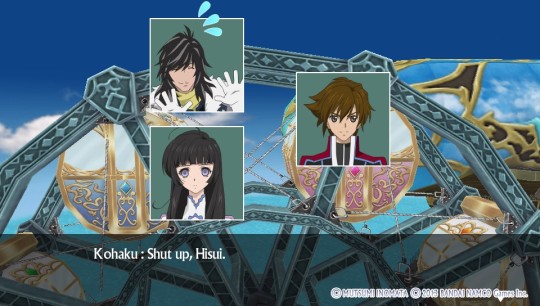
I've talked a lot about Hearts R and the way it rips apart the original story and characters, but I haven't really talked much about its localization, which is truly its own can of worms. While I have stronger feelings about the Japanese version being poorly made in just about every regard than I do about its loc being a bit of a mess, I've gotten a lot more into translation and editing the past few years and I figure it's time to at least write something regarding this.
A lot goes into a localization, and that also means there's a lot more to unpack with Hearts R's loc than just the "Kor" rename and the fact that only a small portion of the dialogue matched up with the voice acting (these being the obvious things anyone can pick up on, even without knowing Japanese).
As a translator who has played through the localization numerous times, while also having gone through the game in Japanese and done a deep study on all the terms and their naming conventions, I want to go over some things, discussing characterization as well as what terms were good and which ones make me scratch my head.
There's a lot I won't discuss here simply due to the scale of the game, so don't expect nitty-gritty analyses and all the various examples of blatant mistranslations to be found in the game or anything. This is just to give an overview of some things I find interesting.
Characterization
Let's start by discussing something that is crucial for characterizing the characters properly: character voice. Each character has their own "language" for how they're written. For instance, in Japanese Shing talks very casually, Kunzite talks very scientifically, Hisui talks like a punk, etc. Essentially the goal is that via reading written dialogue alone, more often than not you should be able to differentiate who is talking without even needing to see their name slapped next to it.
This is something that is not as easy to get across into English, however the skill still exists when localizing dialogue nonetheless. You'll still want to write Shing's dialogue in a laid back manner, and write Kunzite's to be scientific, and make Hisui's very rude.
Overall, I think the loc did a decent job establishing voices. There's definitely some hiccups, but at the end of the day, I'd say the vast majority of the text uses decent character voice for each character. It's far from perfect, but Chalcedony and Kunzite in particular I think were written very well.
However, where I think R fails is that the quips in the game come across very same-y. While the dialogue can be funny, the sass that Shing would say felt very similar to the sass Beryl might say. Beryl's sass is supposed to come more from finding things absurd while Shing's is supposed to be a bit more out of frustration, but the loc didn't differentiate this well. I'm not sure how to better articulate what I mean by this, but trust me that it was a thing.
Also, they would make the characters say quips in dialogue that they weren't really meant to, which sometimes completely changed the feel of a scene. Shing and Hisui got this the worst, and I also think they're the two characters who suffered the most in this loc.
Below I grabbed some examples of character dialogue for each main character so you can see their character voice and what went wrong or what went right. This isn't a full overview of each character but rather just a small selection of lines that stuck with me (Tumblr has an image limit unfortunately, and also there's just a lot of characters I would have to go over).
Shing

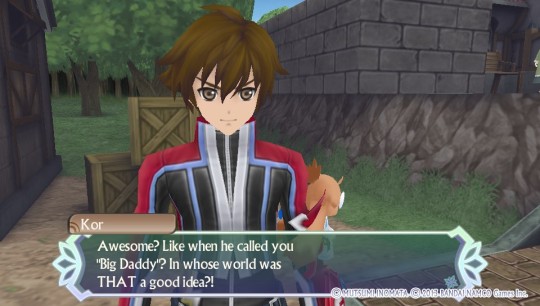
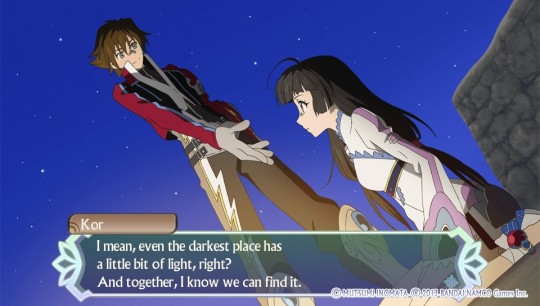
Shing definitely suffers from overusing quips when he wouldn't normally, as well as his overall character voice coming off a bit more bratty than he was originally intended to be. I think everyone's aware of "Kor Meteor doesn't try, Kor Meteor DOES," which has... quite a different feel from what gandoko was originally intended to mean (which was just a cute wordplay on saying "let's go all out"). I will admit this is partially due to his rewrites in R in general as this is also an issue with him in Japanese, but the loc did him no favors. That said I don't think all of his dialogue is horrible, as the third image is an example of a line I think they did just fine.
Kohaku
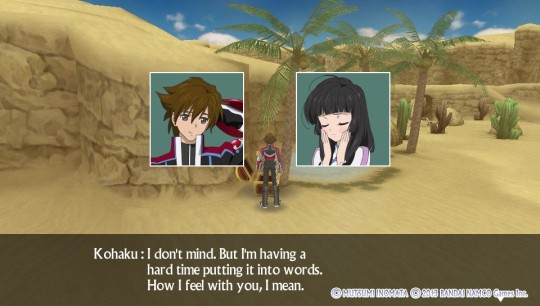

For the most part, I think Kohaku's character voice is fine. She definitely had some weirdness especially early on ("rapscallion" lives in my head rent free), but she definitely eased out and overall I think anyone who plays the loc gets a perfectly fine idea of the character that is Kohaku (at least her R portrayal).
Hisui
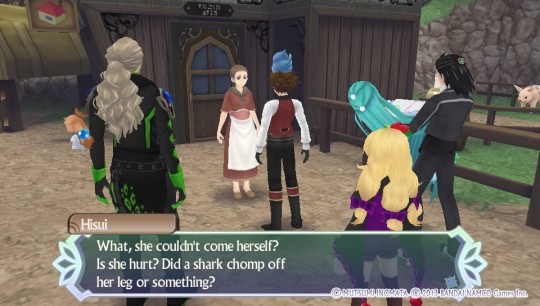
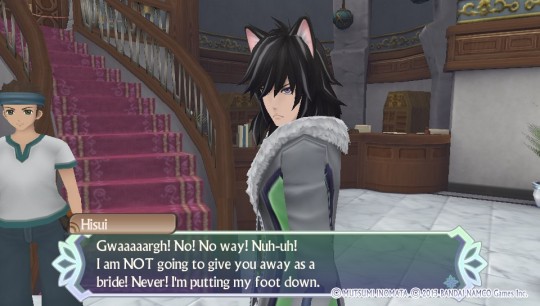

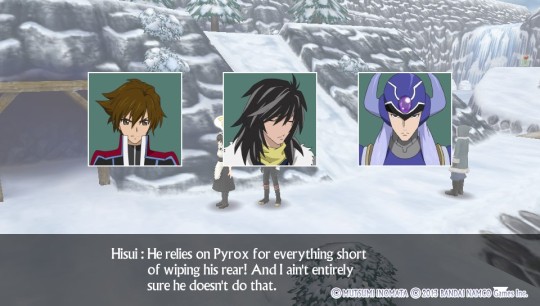
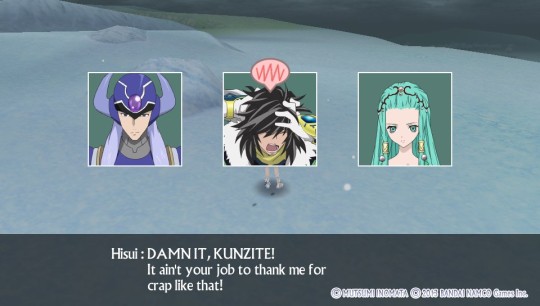
Hisui is, erm... well I'll just say the loc team had a lot of fun with him. Maybe too much fun. It feels like only a tiny amount of his lines were intended to be taken seriously, which is really disrespectful to his character when the whole point of his character is that it's hard for him to express himself in words. Why ruin his serious moments by throwing in random goofy quips and making him come off like a full time jerk? He's definitely not a polite character, but the loc just always tried to make everything that came out of his mouth sound back-handed, even when he was actually trying to be nice.
Another huge issue, which you can see in almost every pic here, is that he would say something from the Japanese (fine) and then the loc would add in another sentence below it that is completely original to the loc and also contributes nothing other than to make Hisui sound like a jerk. For instance in the first line, in Japanese he's (seriously and concernedly) saying "Innes is calling for us? Is she hurt and can't move?" so I'm not sure why they felt the need to make it Extra and Funny. There's an infinite amount of examples of this with his dialogue and every time it truly does paint him to be a much more meanspirited character than he really is.
They did some alright things with his character voice (see the last cap, which is fine), but overall, if you see Hisui say something unhinged and incredibly rude and out of pocket, it's probably the loc and not actually what he said.
Beryl
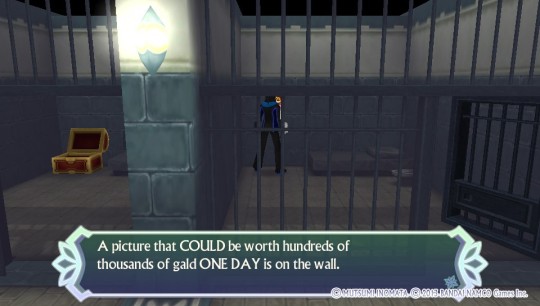
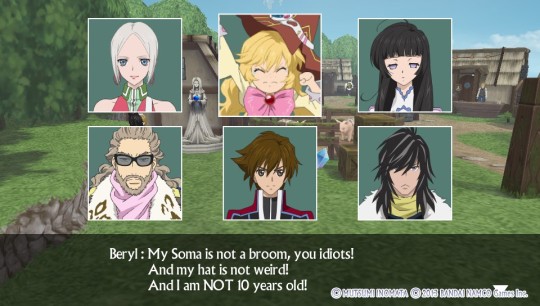



Beryl on the other hand is a character who DOES say sassy things a lot, so I think the overall writing for the loc played into her personality a lot better than it did with the above characters. It's all written very extra and over the top, which is exactly how Beryl needs to be written. I think my only gripe with her writing is that they did make her flub up words more than she originally did (especially simple ones...), but other than that I don't have a lot to complain about here.
Innes


Innes is mostly a "no notes to be had, for the most part fine" character as far as her loc portrayal goes. I will say in Japanese she called the party "kids" a lot and the loc changed it to "mules" which, at least to me, gives off a slightly different nuance, but it does fit her character so I may just be nitpicking.
Kunzite



Kunzite's character voice is very hard to mess up... so much so in fact that I think the loc actually did him justice (you can only hope they didn't mistranslate anything with all that kanji though).
Chalcedony
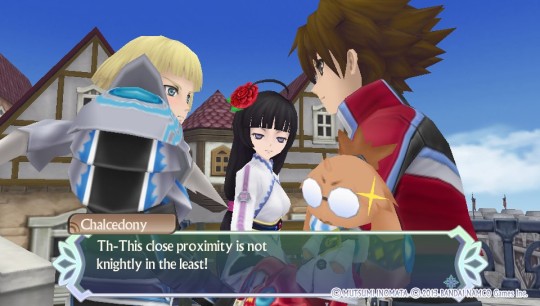


Like Kunzite, I find myself surprisingly content with how Chalcedony's dialogue was written. They got across his pretentiousness and formality just right with not a ton of hiccups.
Galando
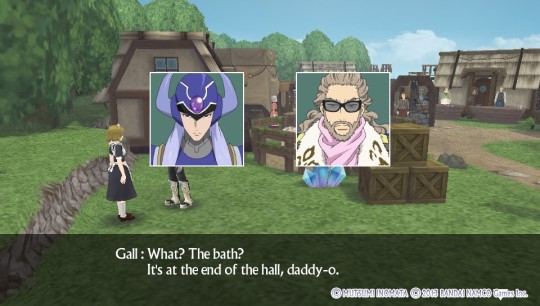

Galando completely falls in the "can never be taken seriously ever" category, except unlike Hisui I think this actually benefits his character. In Japanese, his dialogue and frankly personality are really unremarkable, but in the loc he says a lot of incredibly bizarre and goofy phrases. The loc team had a lot of fun with making him sound ridiculous and it did him a lot of favors when his overall implementation in this story was an absolute trainwreck.
Richea



Richea's dialogue can be a bit hit or miss. Sometimes it's too stiffly worded, sometimes it's too casual. Overall I think her voice is fine though and it never really did her character too many disfavors.
Terms
For this section, here's a very useful reference which writes out most terms in the game, comparing the Japanese names (romanized very straightforwardly) to the loc. I will be using my own romanizations for terms below.
Let's talk about the elephant in the room: Kor. Why did they change his name? It's actually quite simple: Shing is based on kanji. It means 心具 (shingu; heart-tool). Yamamoto stated that among the characters in the game, he's the only one who's not supposed to have a mineral reference in his name. To get around this, they did Kor, which is based on cor which is the Latin word for heart.
I suppose in a vacuum, I get what they were going for. However, the decision fails to make sense for two very simple reasons: recognizability, and the fact that they left the names Hisui and Kohaku in which literally were translated into English in Graces' loc. It comes across as very ironic to me that they were so held up by Shing's name being Japanese wordplay, to the point of changing it entirely, yet ignoring the two party members with Japanese names. Why only Shing? Nobody would know (even Japanese players) that Shing was supposed to be wordplay on anything had Yamamoto not discussed it in an old blog post. Yet they left in the names Hisui and Kohaku, which are very obviously Japanese, and no English player would know what they're supposed to mean, or if they were even mineral references! Maybe their intent was that they're from Norqueen, and Kohaku has cherry blossom aesthetics to her, but this also doesn't make any sense when nobody else from Norqueen had a Japanese name. It's only them.
This isn't me advocating for them doing Jadeite and Amber from Graces' loc (as I think that was a similarly bizarre situation), but if you're going to change Shing, you could at least be consistent and commit to the idea of making everything Easily Understood References, instead of just changing one name to something completely unrecognizable (and frankly a bit dumb sounding) and not the ones that probably warrant it more.
Shing isn't the only character they did this with. For instance, the members of Chen's Corporation weren't intended to have mineral names. Their names are references to marine life in various languages. Chen's last name is Corallo, which is Italian for coral. Sango means coral in Japanese. Ecaille means scale/shell in French (with her real name being Mica, which is actually a mineral and the loc did keep). In the localization, they were translated to... Ultra Marine, Aqua Marine, and Coral respectively. While I don't think Chen and Sango's name changes were horrible, I still think they could have just kept them as is with no issue at all. "Coral" just feels disrespectful though. Why would you name her what Chen and Sango's names were SUPPOSED to be? Her real last name was changed too, from Zimmer to Zinnwald, which is really just pointless more than anything.
A lot of what the loc did can kind of just be boiled down to pointless. Here's some other pointless name changes for NPCs:
Isaac->Azide (is this even a mineral term?)
Pearl->Perl (?????????????? this one I genuinely don't get because pearl WAS a mineral to start)
Dona, Zektz->Kardia, Sydan (both were mineral names changed to heart terms to match with Shing, but really this is a pointless change. Iola's name wasn't turned to Japanese to match Kohaku and Hisui? Make it consistent if you're going to do these things?)
Sinhala->Benston (sinhalite is a mineral. I don't even know anymore)
Spin, Nel->Ward, Hope (spinel is a mineral...)
This isn't even all of them, but these are the most egregious. For a game really insistent on making everything a specific reference, it's almost hilarious how much the localization made things inconsistent with its own decisions, and how it broke things that would have worked perfectly fine had they just translated it literally. No Tales game has changed so many names arbitrarily and made them so unrecognizable with name alone if you compare to the Japanese names.
It's unfortunately not just the character names, as the location names suffered a bit from this too.
While character names are (mostly) based on minerals, the locations were based on fairy tale references. Most location names in Japanese were portmanteau of terms, whether it be author names, location names from fairy tales, titles, you name it. You can read all about this here, and these observations were made by Japanese fans as well. This stuff is about as common knowledge as the Shing naming convention among Hearts communities, so I would be willing to bet the localizers knew about it too.
Anyway, some of the loc ones I think were fine. For instance, a number of those terms just come across as awkward in English (such as シーブル, which I don't really have huge issues with them just going for Seaville). Yuraio needed to be changed anyway, as it's Japanese worldplay (though I can think of many better alternatives than just "Lion Park" if they wanted to keep the fairy tale reference).
However, I do take issue with some that completely change the reading for the name. "Dronning" and "Norqueen" (however you choose to romanize it) sound nothing alike. "Wonderidell" is a fairly straightforward romanization, and "Cind'rella" makes very little sense when in Japanese, Cinderella was the name reference for the Winged Whale ("Cendrillon" in Japanese, "Mysticete" in the loc). I also think Celland and Quartzia were absolutely fine and conveyed their meaning perfectly fine to English speakers, while I will admit it took me a while to figure out that Organica and Minera were supposed to be based on the words organic and mineral.
As for regular terminology, I don't have a ton of nitpicks. My biggest is that I don't really like the term "Spiria Nexus" as a translation for Spirmaze. The game already uses "Spiria Core" (for Spirune), and the words nexus and core are... very similar in meaning! I would probably opt for something like Spiria Labyrinth (and honestly, Spiria Maze works fine as is). Spirune is a bit of a hard one, because in the context of the story, it refers to both the whole and broken pieces of it, so I feel like they could have opted for "Spiria Shard/Fragment" for the broken pieces and "Spiria Core" and "Spiria Shard/Fragment" could have worked hand in hand. This might just be me nitpicking though.
For positives, I really like the terms "calcification," "Will Artes" and "synthetic Spiria". I'm also surprised "despir" (bungle of katakana) stayed intact given every other naming convention they went for (furuere got changed to Will Wisps, when the terms are similar in structure).
Artes
Artes are infamously something Tales is very inconsistent about, and how did Hearts R's loc fair?
To start, each character has their own "theme" to their artes. Shing's are light based and reference astronomy terms, Kohaku's are fire and cherry blossom based, Hisui's are all bird terms, Beryl's are artist babble, Innes' are French marine terminology, Kunzite's are dark based and a bit grim, Chalcedony's are aerial/holy based, and Galando's are... well all over the place. Shing, Kohaku, Kunzite, Chalcedony and Galando are all based on typical artes (and if not, their naming conventions, or are typical artes just a little to the left), while Hisui, Beryl and Innes have entirely unique kits.
Shing: My only complaint is the loc overused the word "meteoric," sadly including Crazy Comet (which I really wish they had left as is, since it's so iconic). So many celestial terms exist!
Kohaku: I just think Scarlet Halo is a bit messy, since it was already localized as Crimson Disc in Graces. Did they forget Graces loc ever happened?
Hisui: It's actually hilarious how bad his got mangled when his are some of the most straightforwardly translated artes in Tales. All of his arte names are just "[bird] [thing]" and if you translate them 1:1, you get a perfectly fine Tales arte name with no work needed. Yet somehow, they messed this up? An arte named wild-hawk got translated to Mosquito Hawk. What? Another one is kite-rain, which got translated to Rainbird. scatter-heron is Cuckoo's Egg. god-shot-chicken is Bird of Paradise. His artes are just very bizarre, because some are translated literally, and the other half just have completely random naming conventions. It makes for a really inconsistent kit of artes, not to mention each arte had a very specific bird associated with it, and the loc just mangled this. His artes really make me scratch my head at what they were thinking.
Beryl: Flying Colors (originally Slashing Colors) is the only arte of hers that's even remotely close what the Japanese had. This isn't really a complaint as I think changing the names is fine, more just an observation since the game didn't get dubbed and her arte names are actual spoken words and not strings of kanji.
Innes: The loc took hers which were two word structured and made them grammatically correct French. Don't really have any other notes here.
Kunzite: His artes are the most consistent to its own conventions, though I would probably change some to more clearly reference what the arte takes inspiration from.
Chalcedony and Galando I don't have any commentary on other than what I said for Kunzite. They're fine.
Closing thoughts
There's of course a lot I didn't cover in this post. For instance, I feel like skits were overall translated better than the story was, and there's a lot of nitty gritty things like titles and flavor text that I didn't touch upon. (Here's a very funny example of the loc team not picking up on a fairly obvious Abyss reference. Nobody knew this was supposed to be about Mieu)
But, I would say my main thoughts on the loc are that in some regards it was fine, and in some ways was highly disrespectful.
For the story dialogue, it feels like someone translated it roughly (and I will note that there are some lines that are just blatantly inaccurate to what was said, even removing the editing fluff, so I assume this was a rushed job), and then an editor came in and edited the lines without hearing any of the voice work attached to it. It's very rough around the edges, to say the least. I do think the game would have worked better if it was dubbed (like the script feels like it was intended for), even if the mischaracterization would still sadly persist.
To add a very personal comment here, Hisui is my favorite Tales character and it hurts that the only way the English fandom has to experience him is at the hands of his incredibly disrespectful localization writing. While I think his dialogue in it can be funny at times, it's not the kind of writing I want to see in very serious scenes. It's not good when a character can never be taken seriously, when that's not at all how they are intended to be viewed.
I will also add, as someone who plays games in Japanese and is heavily involved in fan translation, whenever I play Hearts R's localization, I just translate the dialogue in my head as I listen to the acting, then I read the translation on my screen and kind of laugh at how far it is from how I would have translated it. Not only is it a disservice to English speaking fans, but it is hilariously obvious to anyone who knows both languages how inaccurate it is, which is not how a localization is supposed to read.
(As a final disclaimer, the rants in this post are only intended to discuss Hearts R's localization. I support the localization practice in general, but I am allowed to nitpick when one was so obviously rushed out the door with poor communication. Please read this article to understand the ways in which I approached writing this post. I do not support the witchhunt on localizations that fandom is so currently obsessed with. All of my speaking points have come from someone who has studied Tales localization practices as well as Hearts specifically in depth, and who has aimed for putting out high-quality translation work myself.)
15 notes
·
View notes
Text
Chronicles from 4.012: Why you should play it.
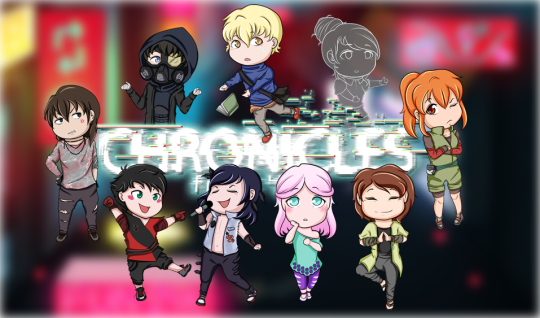
Chronicles from 4012 is an otome game that takes place in a dystopian future in which the forces of good and evil take dominance. As an MC, you'll be haunted by a premonitory dream that'll lead you to encounter supernatural creatures while you develop your own story 😌💕.
I've been keeping track of this game for more than a year, and I can assure you it's one of the best plots I've come across within the otome community. I think that people from certain fandoms would really like this game, so yeah, I'm doing crossposting for a fair cause.
The first thing you should know is that this game is COMPLETELY FREE. For those of you who cannot afford to spend too much money on games, you could easily give it a try, but please consider supporting them on Patreon, since they're a small indie team and any help is much appreciated.
You can play it in two languages: ENGLISH and SPANISH. It personally made me very happy to find a game that was originally written in my mother tongue since the translations to Spanish, in general, do not have much quality.
As an MC, you are a human, but you have THREE PATHS to take.
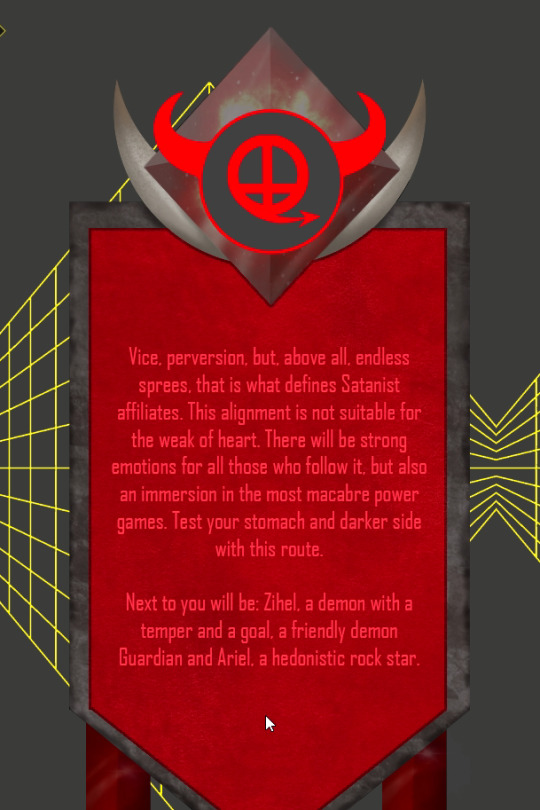
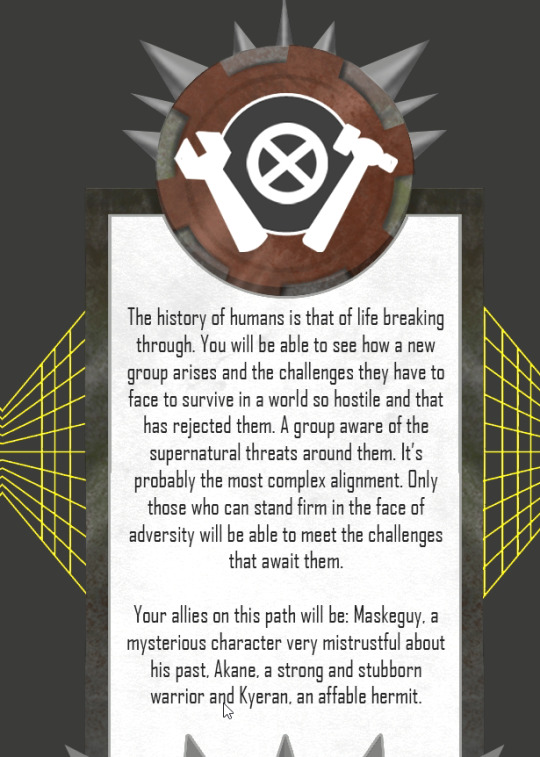
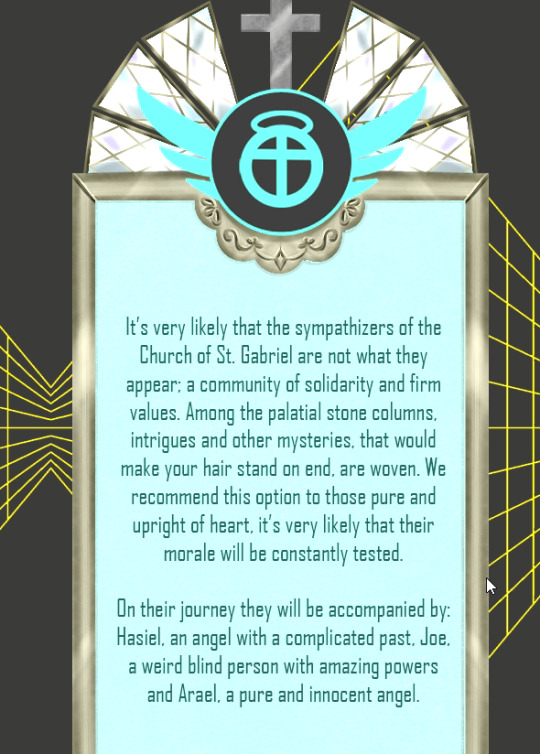
Join the Satanist cult in which you'll meet a few demons and a guy who's okay with the fact that a demon possesses him from time to time.
Stay with the humans that fight for survival from the lowest point in the food chain.
Or follow the path of the sympathizers of the Church of St.Gabriel, accompanied by two angels and a weird clairvoyant gal whose bff is a goat.
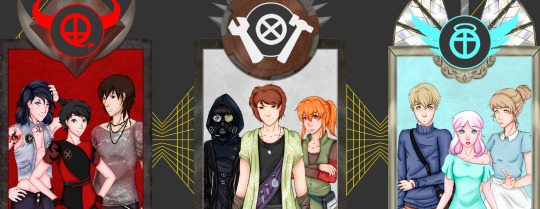
One of the things I like most is that apart from the plot of the story, you have a MORALITY SYSTEM.
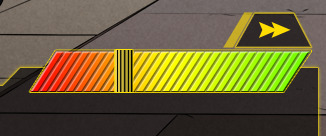
(Yeah, mine is pretty low lmao.) This means that regardless of the path you take, your choices matter to you and to the ones that surround you. Yeah, you can be a chaotic ass in the middle of a church or as sweet as a cupcake while you're surrounded by mean demons, isn't that great?
The CHARACTER BUILDING is AMAZING, each character is a completely different world, and you can romance them the way you want since you can choose your name and pronouns.
As many of you know, I have a jerk type 😔 and of course, my favourite character wouldn't be another one than Zihel, a short-tempered demon (yup, you can see him in his demon form) of wrath who has to pay for his crimes.
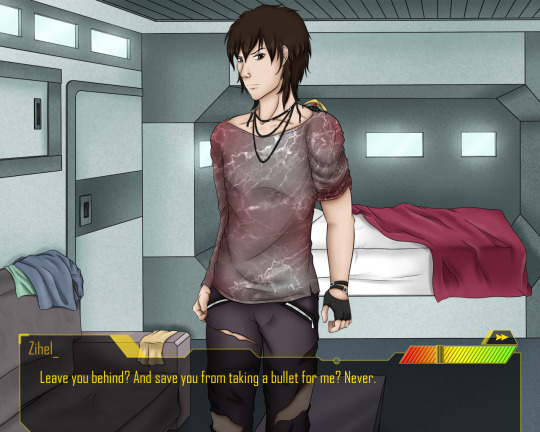
Isn't he a gentleman?
The dev team has a discord where you can talk with other players about the game and also interact with the devs, who are very kind btw.
You can follow @toxicsquad (The dev team) to know more and download the game here! They also have a Twitter and Insta account.
Give it a try, and remember to stan Zihel 😌
#chroniclesfrom4012#chr4012#otome recommendation#otome game#eldarya ane#my candy love#the arcana game#wtnc game#vn recommendation#ikemen vampire#obey me#ikevamp
68 notes
·
View notes
Text
Writing System
This is super important, before we begin with learning words and sentences.
Japanese has 3 writing systems so to speak. Two of them are syllabaries, you may refer to them as "Alphabets", and the third writing system is sort of symbol based, like Chinese.
There's also ROMAJI. Which we'll be using to help you learn sounds and to speak. But please, work on learning the syllabaries as soon as possible. Romaji is terrible for many reasons, including the fact that everyone and their mother writes Romaji in a different way. You may notice that my Romaji is different than some others you've come across. So again. Try to get away from it as soon as possible. Don't be afraid. I know you can do it!
We'll start with Kana, namely Hiragana as you'll be seeing it the most.
HIRAGANA
Hiragana is used mainly for native Japanese words. You will see Hiragana everywhere. So you'll be wanting to learn that first.
A:あ I:い U:う E:え O:お
Ka:か Ki:き Ku:く Ke:け Ko:こ
Sa:さ Shi:し Su:す Se:せ So:そ
Ta:た Chi:ち Tsu:つ Te:て To:と
Na:な Ni:に Nu:ぬ Ne:ね No:の
Ha:は Hi:ひ Fu:ふ He:へ Ho:ほ
Ma:ま Mi:み Mu:む Me:め Mo:も
Ya:や Yu:ゆ Yo:よ *yes there are only 3 of these
Ra:ら Ri:り Ru:る Re:れ Ro:ろ
Wa:わ Wo:を *yes there's only 2 of these
N:ん
Okay, now some of these characters get whats called a "Dakuten" that's a little " or ゜that's next to the Hiragana that changes it's sound. those are as follows:
Ga:が Gi:ぎ Gu:ぐ Ge:げ Go:ご
Za:ざ Ji:じ Zu:ず Ze:ぜ Zo:ぞ
Da:だ Zi:ぢ Dzu:づ De:で Do:ど
Ba:ば Bi:び Bu:ぶ Be:べ Bo:ぼ
Pa:ぱ Pi:ぴ Pu:ぷ Pe:ぺ Po:ぽ
ぱ ぴ ぷ ぺ ぽ are the only ones that use the ゜dakuten.
You'll notice that 「ぢ」sounds like "zi" ... or "dzi"... and not "di" and that 「づ」sounds like "dzu" and not "du" ... that's.... that's a pain in the butt but it is what it is. In order to get the "di" sound it's written 「でぃ」"de" and a little "i" makes "di" ... and actually you'll probably only ever see that written in Katakana 「ディ」
Which brings me to the next part. Little vowels and Little Y sounds.
We covered some of the little y sounds last lesson. You'll see more little Ys than little vowels. The biggest thing you need to remember about little Ys is that they're always stuck to an "-i" character.
Kya:きゃ Kyu:きゅ Kyo:きょ Gya:ぎゃ Gyu:ぎゅ Gyo:ぎょ
Sha:しゃ Shu:しゅ Sho:しょ Ja:じゃ Ju:じゅ Jo:じょ
Cha:ちゃ Chu:ちゅ Cho:ちょ
Nya:にゃ Nyu:にゅ Nyo:にょ
Hya:ひゃ Hyu:ひゅ Hyo:ひょ Bya:びゃ Byu:びゅ Byo:びょ
Pya:ぴゃ Pyu:ぴゅ Pyo:ぴょ
Rya:りゃ Ryu:りゅ Ryo:りょ
You'll notice some of these don't have "y"s in the romaji reading. Don't freak. That's just how it works. And is part of the reason I don't like Romaji.
Like I said you'll also see little vowels: ぁ ぃ ぅ ぇ ぉ but like with 「ディ」"di" you'll probably only ever see them in Katakana. Here's a few anyway:
Fa:ふぁ Fi:ふぃ Fe:ふぇ Fo:ふぉ
She:しぇ Je:じぇ Che:ちぇ Ti:てぃ Di:でぃ
Finally there's little "tsu" っ this little symbol DOUBLES the next consonant!
っか = kka っさ = ssa
etc. a っ can be near any other kana it doesn't really have a restriction besides not coming before あ, い, う, え, お, or ANY of the "N"s
If you come across a double n it will be written with the lone N first 「ん」 followed by one of the Ns with a vowel next to it.
Ex: Konnichiwa = こんにちは
Like English the double consonant doesn't change the sound, it just lengthens it by a fraction (if even that).
っき = "kki" pronounced the same as "ki" って= "tte" pronounced the same as "te"
Does that make sense? :)
KATAKANA (less explanation here because it's the same rules and sounds)
Katakana is used mainly for loan words. Words borrowed from other languages. It's also used in some names.
A:ア I:イ U:ウ E:エ O:オ
Ka:カ Ki:キ Ku:ク Ke:ケ Ko:コ
Sa:サ Shi:シ Su:ス Se:セ So:ソ
Ta:タ Chi:チ Tsu:ツ Te:テ To:ト
Na:ナ Ni:ニ Nu:ヌ Ne:ネ No:ノ
Ha:ハ Hi:ヒ Fu:フ He:ヘ Ho:ホ
Ma:マ Mi:ミ Mu:ム Me:メ Mo:モ
Ya:ヤ Yu:ユ Yo:ヨ
Ra:ラ Ri:リ Ru:ル Re:レ Ro:ロ
Wa:ワ Wo:ヲ
N:ン
Ga:ガ Gi:ギ Gu:グ Ge:ゲ Go:ゴ
Za:ザ Ji:ジ Zu:ズ Ze:ゼ Zo:ゾ
Da:ダ Dzi:ヂ Dzu:ヅ De:デ Do:ド
Ba:バ Bi:ビ Bu:ブ Be:ベ Bo:ボ
Pa:パ Pi:ピ Pu:プ Pe:ペ Po:ポ
Kya:キャ Kyu:キュ Kyo:キョ Gya:ギャ Gyu:ギュ Gyo:ギョ
Sha:シャ Shu:シュ Sho:ショ Ja:ジャ Ju:ジュ Jo:ジョ
Cha:チャ Chu:チュ Cho:チョ
Nya:ニャ Nyu:ニュ Nyo:ニョ
Hya:ヒャ Hyu:ヒュ Hyo:ヒョ Bya:ビャ Byu:ビュ Byo:ビョ
Pya:ピャ Pyu:ピュ Pyo:ピョ
Mya:ミャ Myu:ミュ Myo:ミョ
Rya:リャ Ryu:リュ Ryo:リョ
Ti:ティ Di:ディ She:シェ Je:ジェ Che:チェ
Va:ヴァ Vi:ヴィ Vu:ヴ Ve:ヴェ Vo:ヴォ
ッコ= kko ッソ= sso ッタ=tta ッシ=sshi
... there are probably other possibilities I've left out, but these are all the common ones you should see. and even if that's not true I trust that you can see and understand the pattern here. :)
KANJI There's thousands of Kanji, so I'm not going to list. I will have Kanji in with the lessons, but learn them at your own pace. No worries. :) I've found that once I got to the point where I could start learning Kanji it's made reading a lot easier for me.
Sorry if this is a HELLISH ammount. Just write the syllabaries down and come back to them now and then as reference. You don't have to learn them all today, or this week, or even this month. I just want you to be familiar with them. :)
7 notes
·
View notes
Text
Writing Tips Pt. 9 - Accents
Here's a more specific one that can really make or break a story: spoken accents.
You've probably all seen it happen in fiction. A character comes from a locale with a thick accent, and the author feels they have to represent it as faithfully as possible, leading to virtually incomprehensible dialogue.
"Ah dinnae ken what ta tell ye, lassie, but the wee scunner'll do ye dirty if ye don' take a firm hand ta him!"
"Sacre bleu, but zis is zimply unnacceptable! We cannot be having ze Rocheforts and ze Garniers zitting in ze zame room or zey will be tearing ze place apart!"
Absolutely awful attempts to render stereotypical accents aside, the above lines aren't very legible thanks to the deliberate mispellings in my attempt to convey sound. And for what gain? How easy is it to tell that the first is an attempt at Scottish, or the second at French?
Best to leave out the bulk of it. Use idioms, turns of phrase, or the general rhythm and structure of the words to convey the accent without leaning so heavily into sound changes. This way, you'll be less likely to shake your reader out of the story because they're too busy trying to puzzle out what someone is saying.
So let's try that again:
"I don't know what to tell you, lassie, but the wee scunner'll do you dirty if you don't take a firm hand to him!"
"Sacre bleu, but this is simply unacceptable! We cannot be having the Rocheforts and the Garniers sitting in the same room or they will be tearing the place apart!"
I left alone a few words that don't have a direct English replacement that keeps the same feel (lassie, wee scunner, sacre bleu), along with one phrase (do you dirty) and the general grammar structure of the second example, but all the stereotypical sounds have been removed. Much easier to read, and yet the general idea of the accent is still there.
By way of personal example, when I was younger, I wrote a story with a character with a very heavy accent that was supposed to be something...I don't know, thick American South?
"Mah name is Daphne. Ah'm a seer. Are ya deaf er somethin'? Ah s'pose ya nevah 'eard of da seers before? Waell, ya 'ave now. I must be 'least tree-undred years old er somethin'. Come in, Ah've been 'spectin' ya. Now, 'ave a seat. Right dere on dat box. Ah don't 'ave much in da furn'ture d'partment. Ya ain't from 'round here, are ya?”
An entire chapter with one character speaking like that. Oof. There were even points where she had to repeat herself and try to enunciate to make it clearer what she was saying to the other characters.
This is not good writing.
So here's an attempt to clean it up while keeping the idea of the accent.
"My name is Daphne. I'm a seer. Are you deaf or somethin'? I suppose you never heard of the seers before? Well, you have now. I must be least three hundred years old or somethin'. Come in, I've been expecting you. Now have a seat, right there on that box. I don't have much in the furniture department. You ain't from around here, are you?"
Much easier to read, and should still get the idea across.
Of course, you can ignore all of this if the incomprehensible accent is part of a joke.
#writing advice#writing resources#tips and advice#accents#bad accents#terrible accents#what even are these accents?#like seriously did no one ever tell 13-year-old me not to write like this?#alphabet salad
7 notes
·
View notes
Text
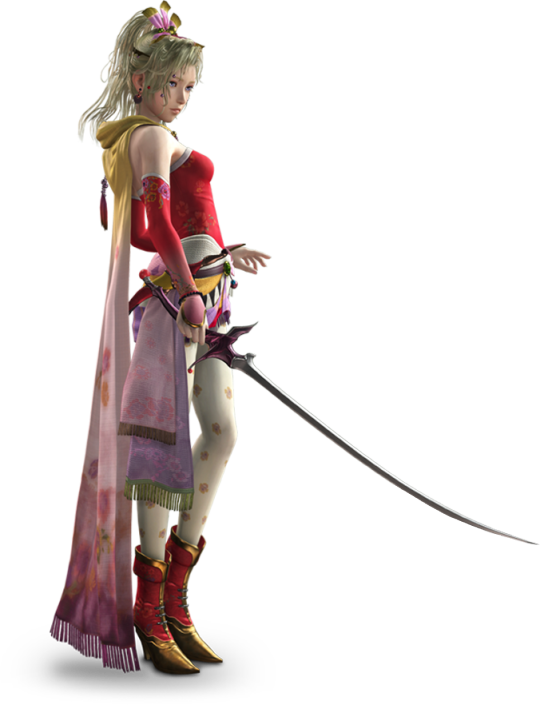
Terra Casts a Spell On You!
(Magitek Elite Madame)
Overview: Beautiful, mysterious, kind… all great words to describe Terra Branford. A young half-Esper lady taken from her home by the Gestahlian Empire and raised as a living weapon before a mission in Narshe gone wrong has her wind up in the company of the Returners. Her magical capabilities are incredible, even without factoring in her power-doubling Trance, her incredible Apocalypse sword, and the abilities she gained from Magicite. But be warned, she lacks useful recovery a good amount of the time, and she can be quite frail.
Gimmick: Terra's Trance morphs her body into her Esper form upon maxing out her Gauge, which fills over time. In this state, she's all around much stronger. With doubled speed, power, and defense… that is, until she uses a Special Move, Bomb, or Final Smash… or y'know… gets launched off-screen or loses a her Stamina. Also, when at 100% damage or higher, all Smash attacks gain a 1/16 chance at becoming the powerful Desperation Attack Riot Blade, which has great range and four strikes. Riot Blade will also get rid of your Trance, so please keep that in mind.
Standard Attack: A slash, a stab, and a Fire spell. Quite basic really, but the stab has Terra advance forward.
Her tilts are various slashes.
Her Dash Attack is a jumping slash.
Smash Attacks: Do you know the name Cyan Garamonde? He’s a party member in Final Fantasy VI who is sadly quite outclassed. A real shame too, he has a great design, and his samurai motif is very appealing. Well Cyan, today is the day of your vindication! Terra, who spent quite a long time studying your Bushido skills, is ready to use them to great effect in Smash! They're way cooler than what I initially planned. Keep in mind, the names used here are combinations of their Japanese names and their original English localizations. (To put it better, JP first, Woolsey second!)
-Side Smash: Kiba Dispatch. A quick, ultra-strong stabbing lunge.
-Up Smash: Mai Quadra Slam. Four upward sword strikes that do good damage.
-Down Smash: Sora Retort/Tsuki Stunner. Essentially a counter attack that has a 3 second window of effect. If struck during this window, Terra will retaliate with a slash that has a decent range. If she's not struck, she will rain down blades made of ki, which are very prone to stunning enemies.
Neutral Air: Blizzard. A spin of ice that can freeze enemies.
Forward Air: Fira:
Up Air: Blizzara: An icy somersault that can freeze enemies. Deals much more damage than Blizzard.
Back Air: Thunder. Kicks back a bolt of lightning.
Down Air: Thundara. Does a lightning-charged stomp.
Neutral Special: Active Time Battle Menu. A variant on Hero's Command; this one has all options available at a times. Can move around a lot more, but you don't really have very few options for buffs and such. If you're having trouble with the movement while the menu is up, the Taunts have been disabled in this state so you can use the buttons to help make your selection. Better make it quick, this menu lasts only 2/3 of the time of Hero's!
-Bio: Sends forth a poisonous cloud a few feet in front of Terra. If it hits, it does about 9% and leaves the enemy with fast-acting poison for 5 seconds.
-Flare: Does damage in a very high column that can counter enemies.
-Protect: Halves all damage for 10 seconds.
-Thundaga: Fires off a massive beam of electricity that does great damage. It's very easy to jump over, however.
-Cura: Restores 30%. (50% in Trance)
-Graviga: Slams down every enemy within range of the platform Terra is on. Hurts an awful lot more if they were in the air.
-Quake: Trips and damages all opponents on the ground you're on. Deals 10% to you.
-Banish: A spell that can instantly defeat an opponent. Increases in effectiveness at higher percentages.
-Flood: Sends rushing water that can damage and carry away enemies.
-Meltdown: Deals the most initial damage out of ATB Menu's spells (at a whopping 50-80%) and has the longest burning effect, range, and spread, but at the cost of dealing a flat 30% to Terra herself, which triples in Trance.
-Tornado: Rips up everyone's percentages to 300%. And I do mean everyone. Only use if you're extremely desperate. Considering Terra's pretty light, you'd better be ungodly careful.
Side Special: Holy. Think Robin’s Arcfire, but with no burning damage. To compensate, it'd be a bit stronger.
Up Special: Firaga. Propels Terra upward with a concentrated burst of flame. Deals 20-28% on direct contact and leaves a burning effect.
Down Special: Summon. Using the power of your Magicite, you can summon an Esper's power to devastate opponents with powerful magical attacks! But beware, during this you stand completely still, and are unable to move until the Esper disappears. You're resistant to knockback and damage, but if your opponent can get in enough damage that can break your concentration/launch you, you're a sitting duck. In addition, the Esper Terra summons is entirely random, so you'd better make sure your teammates are covering you or pray for your own safety. And if you get it off, you can't activate this special again for 30 seconds. She has 4 potential summons.
-Maduin: Chaos Wave. Unleashes a tide of raw anger upon all opponents within Terra's range. Functions similarly to Mario Finale or Marisa's Master Spark.
-Valigarmanda: Tri-Disaster. Fires off a series of screen crossing beams with wide-ish range in many directions. Can burn or freeze opponents.
-Midgarsormr: Abyssal Maw. A far more powerful version of Quake that can even hit enemies in the air in a wide radius around Terra.
-Bismarck: Breach Blast. A far more powerful version of Flood that significantly increases spread and damage.
Bomb: Meteor. Summons down a series of meteors that strike enemies. It's basically a slightly less good PK Starstorm.
Final Smash: Trance Ultima. Terra goes into Trance and rushes across the stage. Like Joker, if she misses her target, she can turn the opposite direction and attempt to strike again. Once her targets have been struck, a cinematic plays where she charges up, then casts Ultima. Once it finishes, they are launched quite far.
And I know I don’t usually talk about Shields and such but eh… this time I'll make an exception.
Shield: There's a second long window where Terra will Reflect all projectiles. It’s quite easy to miss, but if you can hit you'll be rewarded.
Stage Entrance:
-Rides in on a Chocobo, and jumps off as it rides away.
Taunts:
-Imitates that piece of her Yoshitaka Amano artwork at the bottom.
-Turns to the screen and looks down.
-Briefly takes on an aura colored after her Esper form.
Victory Screen: Like Cloud, she uses the Victory Fanfare from her game.
-Celebrates in earnest with FF6's victory animation, often giggling.
-Hopes back onto the Chocobo, and rides toward the screen, saying “Apologies…” or “You won't be forgotten.”
-Downs an Elixir, and smiles at the camera.
Alts:
-She also has palettes based on her fellow Returners’ sprites from the same game. Specifically, Locke, Edgar, Shadow, Gau, and Strago. No Celes? How come? Well… that's currently a trade secret. It will be revealed in due time, dear readers.
-One of her alts is based on her sprites from Final Fantasy VI, as done by Kasuko Shibuya. Essentially, her Second Form from Dissidia.
-Her last palette is based on the battle sprite of one Kefka Palazzo. He's a very iconic villain among western fans, thanks to, in no small part, his dark but humor-filled dialogue and his Joker-like mannerisms. He just might be worthy of his own character slot.
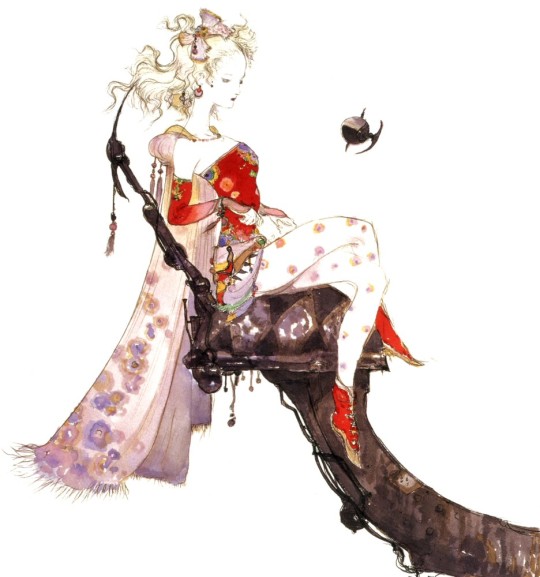
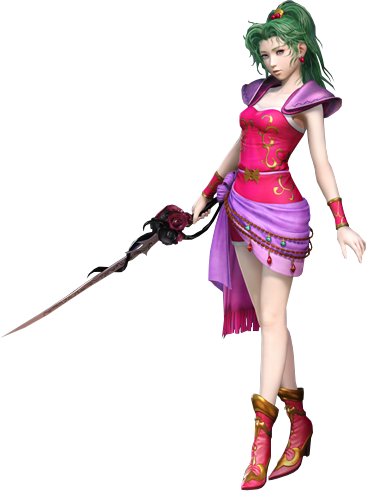
Special thanks to @spooner-the-trinity for the suggestion. ...and apologies for taking so long oof.
26 notes
·
View notes
Text
“ AKIHABARA, JAPAN”
“Mina, Ohayo gozaimazu!”, “Konnichiwa”, “Arigato”, “Doitishimaste”, “Sumimasen”, “Hai Hai”, “Konbawa”,
Apparently, these are the common Japanese words you can hear from this place which is Akihabara, Japan. As far as I know, Akihabara is known as the world's leading electric city and home to the Otaku culture. It's a great place to shop for Japan's underground culture and high-tech gadgets.
I have longer wanted to wish that I will be here in this place, so that I can experience the good quality of anime books and series and especially to join their celebration and tradition. Akihabara, Japan is famous because of the great number of otaku people living in here and due to the fact that this place is also called “anime world”, where products and equipment mostly displayed are about two-dimensional characters made by three-dimensional creators.
Akihabara, Taito City, Japan is the complete name of this place where you can find different personalities, good, creative and imaginative people. People in this city tend to invite people who has interest in anime and manga to buy their products and to make those people happy.
The restaurants, the cafes, the amusing stores are filled with anime and manga characters and also there are people who are dressed up as characters which we basically call them as “cosplayers”, their main purpose is to dress up and invite people to go to their store or café in order to buy their products and also to entertain them with their charismatic aura, like they will act as the real two-dimensional character so that the customers will enjoy buying their satisfying products.
Usually the seller there are displaying figures, figures that simply look like a doll of an anime or manga character even the materials used to made it are unique and high quality and people are amused by how people and what process they actually made the figure. They are also selling books filled with beauty and imagination, you can really enjoy just by reading it. They also sell costumes and foods to be able to feel the newcomer that he or she is at home and really belong in this particular place, and the newcomer will be able to like Akihabara, Japan.
Top places you must visit in Akihabara Japan! (Otaku Version)
1. Yodobashi Camera!
It is one of the best electronics stores in Japan to buy the latest electronics products, the 9 storied department store “Yodobashi Camera” is where the widest variety of electronic gadgets can be found. If you are into the latest high-tech products, you can easily spend 2–3 hours there. Besides electronics products, there are a wide range of products in various categories available such as video games, toys, luxurious brand products and cosmetics products. Yodobashi Camera is located in front of Akihabara Station, Japan Web Magazine (2020)
2. Mandarake
It is one of the most significant stores in Akihabara, which is often called “the largest manga and anime store in the world”. Mandarake deals with secondhand items related to manga, anime, game, dolls, etc including loads of rare items which you can probably find only in Mandarake, Japan Web Magazine(2020). When in Akihabara, do as the otakus do and venture out to the multitude of anime and manga shops. Opening its doors in 1987, Mandarake is one of the longest-standing and largest otaku emporiums stocked with anime merchandise, figures, video games, and rare goodies. Towering at eight floors, the flagship store in Akihabara is also equipped with English-speaking staff to assist you in finding one-of-a-kind otaku paraphernalia, Matcha(2019)
3. Kanda Myojin Shrine
is one of the most important shrines in Japan and popular from anime lovers as the shrine often associates with anime culture, Japan Web Magazine(2020). Pray for prosperity, good luck and marriage at the Kanda Myojin Shrine, where three major gods, or kami, are enshrined. They include two of the seven Gods of Fortune: Daikokuten, who presides over bountiful harvests and matrimony; and Ebisu, the god of fisheries and business, Gotokyo(2019).
4. AKIBA CULTURES ZONE
Is a six-story department store containing a large number of shops catering to those interested in otaku culture. There are subculture stores such as ACOS, which specializes in cosplay goods, to Rashinban and Animate are both offering anime merchandise. Hands down, this is a unique combination of shops you'll only find in Akihabara.Thingss you must do to enjoy Akihabara, Japan!
Top Food Restaurant in Akihabara, Japan!
Source from Japan Web Magazine (2020)
1. Maidreamin (めいどりーみん)
Maidreamin is the largest franchised maid cafes in Japan that has several branches across the country. 7 of them are located within Akihabara area. If you are looking for the unique only-in-Japan dining experience, how about being served by cute maids at one of these classic maid cafes!
2. Kanda Matsuya (神田まつや)
Kanda area is only a few blocks away from Akihabara area, and there are numbers of long-established Japanese restaurants. Visit Kanda Matsuya Soba and try the authentic Japanese soba noodles.
3. Tonkatsu Marugo (丸五)
Tonkatsu (Japanese pork cutlet) is a must-try Japanese dish for meat eaters. Tonkatsu Marugo is one of the finest Tonkatsu restaurants in Tokyo, and the restaurant was introduced by Michelin Guide.
4. Tempura Hisago (ひさご)
Although Akihabara is a center of modern culture of Japan, you can also enjoy authentic Japanese cuisine such as Tempura dishes. At Hisago, delicious Tempura dishes are served since 1918.
5. Aoshima Shokudo (青島食堂)
One of the busiest Ramen stores in Akihabara! Aoshima Shokudo is a famous regional Ramen shop from Niigata Prefecture,serving simple yet flavourful Shoyu Ramen with the significant soy sauce based soup with a hint of ginger. The restaurant has only 9 counter seats, so be prepare to wait in a long queue, especially during lunch time!
6. Yamano (やまの)
Enjoy delicious Wagyu beef in the heart of Akihabara with traditional Japanese BBQ (Yakiniku)!
7. Pinafore (ぴなふぉあ)
Another popular maid cafe in Akihabara, Pinafore offers guests the most unique and fancy dining experience with cute maids and decorated food and drinks.
8. Menya Musashi (麺屋武蔵 巖虎)
Menya Musashi is a popular “Dipping Ramen” Tsukemen style restaurants in Tokyo, and its Akihabara branch is located near Akihabara Station.
9. Motenashi Kuroki (饗 くろ喜)
Motenashi Kuroki is one of the most well-known Shio Ramen (salt base soup) restaurants in Tokyo. The shops offers delightful bowl of Ramen served with selected ingredients and has aromatic and delicate taste.
10. Kanda Yabu Soba (かんだやぶそば)
One of the oldest restaurants in Tokyo with over 100 years history, serving authentic and fresh Soba noodle in a preserved historic building.
11. Kanda Koju (かんだ光壽)
Kanda Koju is one of the best spots in Tokyo for Sake lovers that offers a wide selection of Sake drinks served with delicious and authentic Japanese pub food.
12. Marufuku Coffee (丸福珈琲店 )
Cozy and nostalgic Kissaten (Japanese style cafe) located inside the popular electronic department store, Yodobashi Akiba. Try their classic style pancake with freshly brewed aromatic coffee.
Otaku Culture in Akihabara, Japan!
Otaku Culture is one of the most famous Japanese pop cultures worldwide as well as Kawaii Culture, and Otaku is the people who obsessed with some pop cultures such as manga and anime. If you are an Otaku who loves Japanese anime, you can be called “Anime Otaku”.
Akihabara, the town which has been visited by more foreign tourists lately, is looked on as the mecca of Otaku. There are numerous pop culture shops which sell various Otaku items from manga and light novels to character’s model figures and other exclusive goods in Akihabara. In addition to Akihabara, Nakano is coming under the spot light as an Otaku town in Tokyo in the past several years, Japan Web Magazine(2020).
What is “Otaku”?
Otaku (おたく or オタク) is a Japanese term for people with consuming interests, particularly in anime and manga or a young person who is obsessed with computers or particular aspects of popular culture to the detriment of their social skills, Oxford Languages,(2020)
Four Types of Otaku!
1. Manga Otaku- a type of Otaku who daily reads books or manga.
2. Anime Otaku- a type of Otaku who watches series and movies of 2D characters.
3. Idol Otaku- a type of Otaku who idolize female or male idols dancing and performing in stage.
4. Game Otaku- an Otaku who plays games and addicted to games only.
Akihabara, Japan is an amazing place to have fun, entertain and satisfy yourself. Meeting new people, new culture, tradition and especially a place where you truly find yourself who you are and what is it you truly like! A place with dedicated and passionate hearts and full of creative and wise people! So what are you waiting for? Let’s go to Akihabara, Japan!
#travelliterature
#creativenonfiction
#actsheet14

0 notes